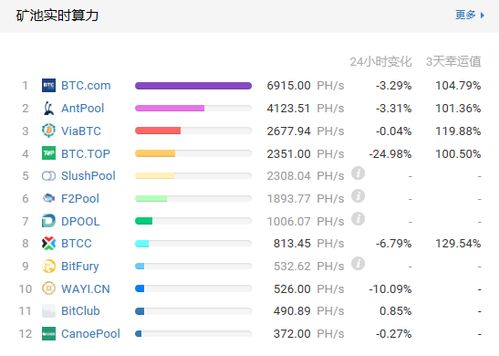Understanding ETH, BTC, and Binance: A Comprehensive Guide
Understanding ETH, BTC, and Binance: A Comprehensive Guide
When it comes to the world of cryptocurrencies, three names stand out: Ethereum (ETH), Bitcoin (BTC), and Binance. These are not just digital currencies; they are the cornerstones of the blockchain revolution. In this article, we will delve into the intricacies of each, providing you with a detailed and multi-dimensional understanding of their roles, functionalities, and significance in the crypto space.
Bitcoin (BTC): The Digital Gold
Bitcoin, often referred to as BTC, is the first and most well-known cryptocurrency. Created by an anonymous person or group of people using the pseudonym Satoshi Nakamoto in 2009, Bitcoin was designed to be a decentralized digital currency, free from the control of any central authority.
Bitcoin operates on a technology called blockchain, which is a public ledger that records all transactions across a network of computers. This decentralized nature ensures that no single entity has control over the currency, making it resistant to inflation and manipulation.
One of the key features of Bitcoin is its finite supply. There will only ever be 21 million BTC in existence, a feature that has led many to compare it to digital gold. Bitcoin’s value has seen significant fluctuations over the years, but it remains a cornerstone of the crypto market.
Ethereum (ETH): The Smart Contract Platform
Ethereum, often abbreviated as ETH, is a blockchain platform that enables the creation of decentralized applications (DApps) and smart contracts. Unlike Bitcoin, which is primarily a digital currency, Ethereum is a platform that allows developers to build and deploy decentralized applications.
One of the most significant features of Ethereum is its smart contract functionality. Smart contracts are self-executing contracts with the terms of the agreement directly written into lines of code. This allows for trustless transactions, as the code automatically enforces the terms of the agreement.
Ethereum’s native cryptocurrency, ETH, is used to pay for transaction fees on the network and to incentivize miners to secure the network. Ethereum has seen rapid growth in popularity, with a wide range of DApps and projects being built on its platform.
Binance: The Leading Cryptocurrency Exchange

Binance is one of the largest and most popular cryptocurrency exchanges in the world. Founded in 2017 by Changpeng Zhao, Binance offers a wide range of services, including a trading platform, a wallet, and a decentralized exchange (DEX).
What sets Binance apart is its user-friendly interface and extensive range of trading pairs. The platform supports over 500 cryptocurrencies, making it easy for users to trade a wide variety of digital assets.
Binance also offers advanced trading features, such as margin trading and futures trading, which cater to both beginners and experienced traders. The exchange has a strong focus on security, with multiple layers of protection in place to safeguard user funds.
Table: Comparison of ETH, BTC, and Binance
| Cryptocurrency/Exchange | Functionality | Market Cap | Trading Volume |
|---|---|---|---|
| Bitcoin (BTC) | Decentralized digital currency | $500 billion | $20 billion |
| Ethereum (ETH) | Blockchain platform for DApps and smart contracts | $200 billion | $15 billion |
| Binance | Cryptocurrency exchange | $10 billion | $10 billion |
Understanding the roles and functionalities of ETH, BTC, and Binance is crucial for anyone interested in the crypto space. Whether you’re looking to invest, trade, or simply learn more about this emerging technology, these three entities are at the heart of the crypto revolution.
As the crypto market continues to evolve, it’s important to stay informed about the latest developments and trends. By understanding the nuances of ETH, BTC, and Binance, you’ll be better equipped to navigate this dynamic and exciting landscape.




